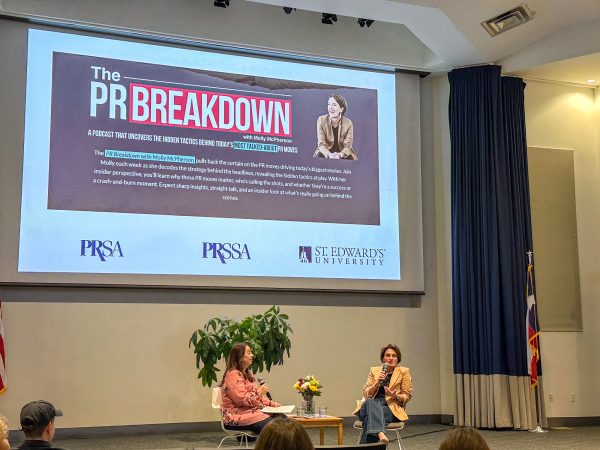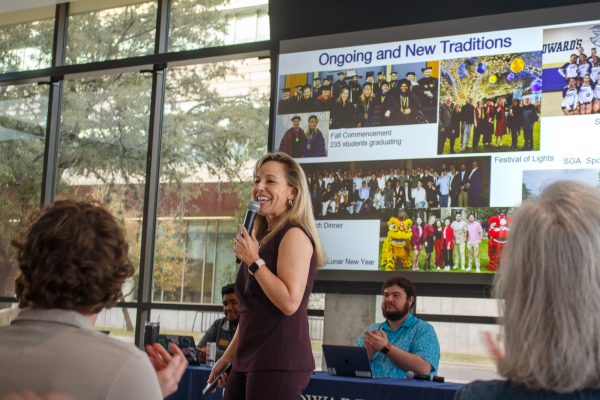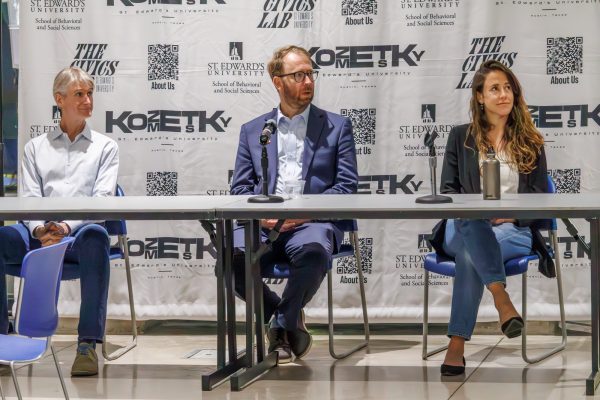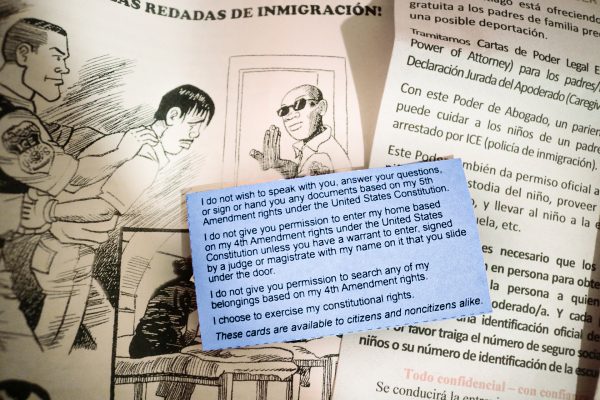EXCLUSIVE: Rare color photos of 1966 United Farm Workers march to be donated to St. Edward’s University
St. Edward’s University has received a special collection of previously unpublished color photographs which document part of the historic 1966 Labor Day march from Rio Grande City to the Capitol in Austin.
Among the photos are snapshots of the iconic civil rights leader Cesar Chavez on Congress Ave. with South Texas farm workers who had made the entire 490-mile journey on foot.
And they almost never saw the light of day— or the darkroom.
“I knew they still existed… probably,” Phil Oakley said of the film he had taken and sent to be developed nearly 50 years ago. “They had been lost.”
Oakley said that he hadn’t thought about the photos for a long time after he had initially taken them. The Austin native, who had been working for a radio station in Dallas at the time, had gone to Austin on his day off to visit his grandmother and attend the march with the intention of selling some of the interviews he’d be conducting to bigger news outlets like NBC or ABC.
“Mondays were my days off. I wasn’t shooting for publication,” Oakley said. “I never considered that they would ever be published.”
The fact that Oakley was not taking these photos for publication allowed him the freedom to shoot in color, something most people weren’t doing at the rally; the photojournalists needed to shoot for the newspaper, which was still in black-and-white.
“Nobody else was shooting in color that day,” Oakley said.
Despite the brilliance of the photos, it wasn’t apparent to Oakley then that they would be important. At the time, Chavez wasn’t even very well-known outside of California. From Oakley’s recollection, this is the march that marked his transition from a California labor organizer to a nationally-recognized leader.
“Hardly anyone in Texas knew who Cesar Chavez was in 1966,” Oakley said. “It’s hard to believe that now, but it’s true.”
In the weeks immediately following the march, Oakley said, the photos would have been considered old news, and they would not yet have been considered historical.
“There was no point in publishing them then,” Oakley said.
Almost 50 years later, he had decided to publish them and Oakley said it took the film containers about 10 months to resurface from the time he began his search.
“I had no idea where they were,” Oakley said. “They were still 35 mm slides. They’d been in heat, they’d been in God-knows-where.” His son had unknowingly kept them.
After finally recovering the film, Oakley had them digitized and decided to give them to St. Edward’s because he believed the university merited them for its “vital role” in feeding and sheltering the marchers.
“St. Edward’s deserves a lot of credit,” Oakley said. “[The university] had the courage to stand up.”
He credited the Catholic Church as a whole with facilitating the marchers on their difficult journey.
“It was the protection of those church communities… that saved the marchers from disappearing. If it hadn’t been for the Catholic church… there wouldn’t have been a march,” Oakley said. “The church saved that march for history.






